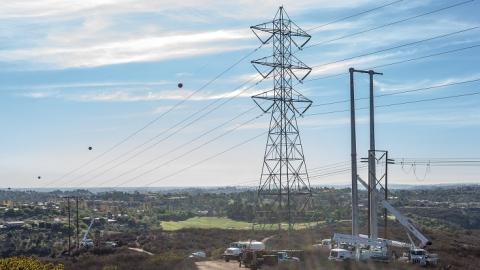Safety. It’s at the core of our values and at the heart of everything we do. Over the span of the next year, you may notice helicopters hovering near your neighborhood installing brightly colored balls on our transmission lines. These red, white and yellow aerial spherical markers serve an important purpose: they help make power lines more visible to low-flying planes and helicopters, enhancing safety and helping to save lives.
At SDG&E, we work closely with local, state and federal regulators to ensure we’re in compliance with all codes and advisories. According to Federal Aviation Administration guidelines, all power lines 200 feet or higher, or those that may be a possible safety hazard for low-flying aircrafts should be marked by aerial spheres. Power lines may be difficult to see on low-level flights, especially if the pilot is facing the sun or flying in low visibility conditions such as fog or rain.
Technology leads to more accurate assessments
We own and operate more than 2,083 miles of transmission lines and more than 23,000 miles of distribution lines that routinely undergo reviews and assessments to ensure the highest level of safety for our customers, our employees and our communities. New advancements in technology are enabling us to better model and analyze situations and potential areas of concern.
In the past few years, we performed a high-tech survey of the entire transmission system using cutting-edge Light Detection and Ranging (LiDAR) sensors, which provide the most accurate measurements. We developed a model that integrated technology-driven data collection and collaborated with experts and the FAA to conclude that an additional 126 miles of transmission lines in our services territory need markings for an extra layer of safety. The markers have a spherical shape to allow the same level of visibility from every angle and are installed by aircrews in helicopters.
The installations will be done in phases spanning the length of our region and are expected to be complete by the end of 2018.
Click here to learn more about how we’re investing in safety.


